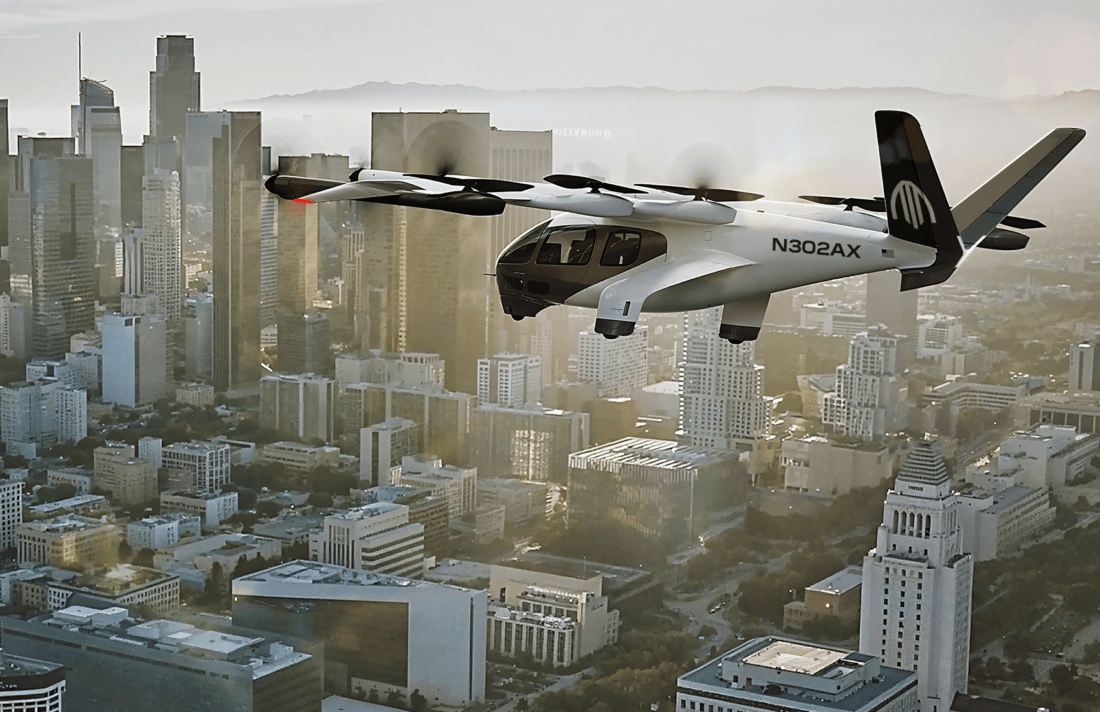This article represent the views of the author and does not in any way constitute or imply investment advice. The advanced air mobility (AAM) industry is edging closer to takeoff. Publicly traded companies such as Joby Aviation (NYSE: JOBY) and Archer Aviation (NYSE: ACHR) are two of several names defining this new frontier, developing electric vertical takeoff and landing aircraft (eVTOLs) designed to transform short-range travel. Both companies have reported progress toward certification and commercialization, and both have experienced sharp stock swings that highlight how dependent this market remains on regulation and public opinion.
Joby Aviation: Final Steps Toward Certification
Joby Aviation announced that it has begun power-on testing of its first FAA-conforming aircraft, a significant milestone that marks the start of the final phase of type certification. The company has also expanded its manufacturing footprint in Dayton, Ohio, where it plans to produce key components such as propellers, and it continues to pursue international approvals, including work toward UAE certification targeted for 2026.


At roughly fifteen dollars per share, Joby’s stock has seen sharp intraday movements that reflect investors’ enthusiasm for visible progress combined with caution over timing. Institutional purchases, such as recent acquisitions by Ring Mountain Capital, show growing confidence in Joby’s long-term potential. Still, certification and scale-up remain costly, and any delay could quickly shift market sentiment.
Archer Aviation: Partnerships and Strategic Positioning
Archer’s path forward has focused on partnerships and early revenue plans. The company was recently selected to participate in the Tokyo Metropolitan Government’s eVTOL Implementation Program, working with Japan Airlines to prepare its “Midnight” aircraft for use in Japan. Archer has said it expects to see its first commercial revenue in early 2026, positioning itself as one of the earliest entrants into passenger operations.


The company’s leadership roster also reflects an emphasis on regulatory credibility. Former Acting FAA Administrator Billy Nolen joined Archer in 2023 as Chief Safety Officer, lending insider knowledge of the certification process. Archer’s stock, trading around nine dollars and fifty cents, has gained strongly over the past year but has also pulled back ahead of quarterly earnings, underlining the volatility that accompanies any pre-revenue aerospace venture.
Volatility Across the Sector
Both Joby and Archer have shown pronounced stock volatility, a reflection of the sector’s early-stage status. Investors respond quickly to every certification update, partnership, or timeline adjustment. When news is positive, valuations rise sharply; when schedules slip, prices retreat.
This pattern is common in industries approaching what many describe as their “internet moment,” the point where a breakthrough technology moves from promise to public use. For AAM companies, that transition depends not only on technical success but also on infrastructure readiness, airspace integration, and market trust.
Regulation and Public Acceptance: The Hidden Variables
AAM’s progress depends as much on government policy and consumer perception as on engineering milestones. FAA type certification, local flight approvals, and vertiport construction can accelerate quickly or stall for years. Meanwhile, community sentiment about noise, safety, and affordability will shape how soon air taxis become a familiar sight.
Experience across aviation and emerging technologies shows that these factors can change suddenly, or linger in uncertainty. A single policy shift or public incident can move both timelines and investor confidence overnight.
A Long Runway to Reality
Joby and Archer may be the most visible public examples, but they represent only part of a broader ecosystem of air mobility developers racing toward commercial operations. Their progress shows real momentum but also the complexity of turning innovation into everyday transportation.
For now, AAM’s trajectory remains defined by volatility in markets, in regulation, and in public expectation. The next year may not deliver large-scale passenger flights, yet it may reveal which companies are best positioned to take off when the skies finally open.
Read more:


Miriam McNabb is the Editor-in-Chief of DRONELIFE and CEO of JobForDrones, a professional drone services marketplace, and a fascinated observer of the emerging drone industry and the regulatory environment for drones. Miriam has penned over 3,000 articles focused on the commercial drone space and is an international speaker and recognized figure in the industry. Miriam has a degree from the University of Chicago and over 20 years of experience in high tech sales and marketing for new technologies.
For drone industry consulting or writing, Email Miriam.
TWITTER:@spaldingbarker
Subscribe to DroneLife here.

